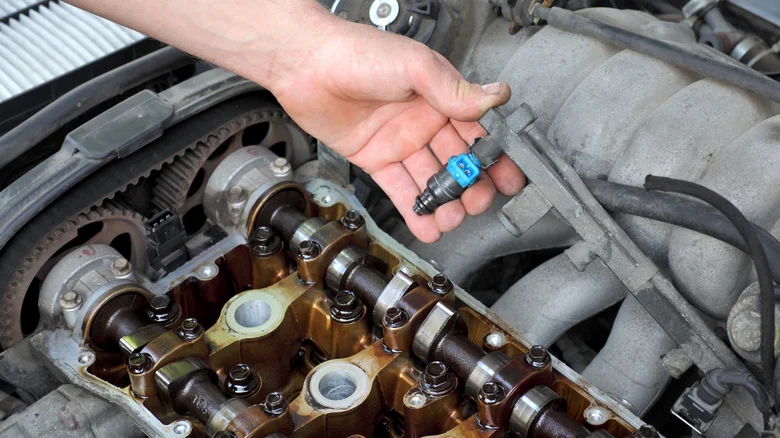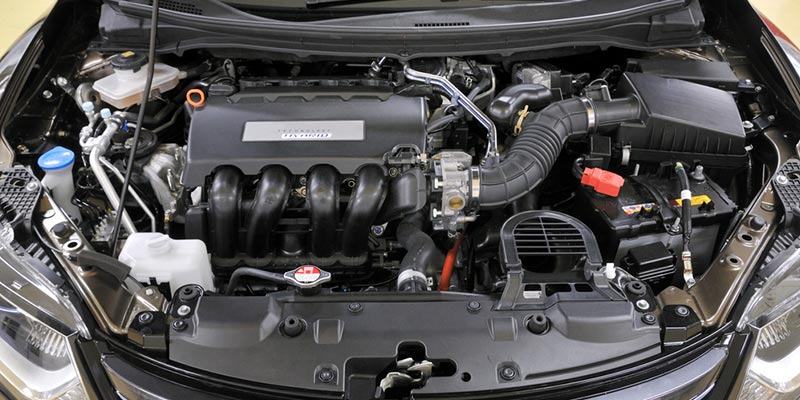Modern vehicles are packed with technology, and acronyms like ABS (anti-lock braking system) and EV (electric vehicle) have become part of everyday conversations. But one abbreviation you’ll often hear when discussing engine performance is EFI—short for electronic fuel injection.
According to Car and Driver, EFI is a computer-controlled fuel delivery system that has replaced carburetors in modern cars. It ensures fuel is injected with precision, improving efficiency, reliability, and performance while reducing emissions. In a report by Bosch, EFI technology is credited with enhancing fuel economy by optimizing combustion and delivering fuel precisely when needed. This system has transformed how engines operate, ensuring smoother and more controlled fuel delivery while optimizing power output.
EFI works by improving the air-to-fuel mixture, ensuring each cylinder receives the right amount of fuel for consistent engine performance. Sensors monitor temperature, throttle position, and air intake volume, sending data to the electronic control unit (ECU), which calculates the precise fuel requirements. The result is better mileage, improved throttle response, and a smoother drive.
From airplanes to everyday cars

While EFI might sound like futuristic technology, its roots go back decades. According to Bosch, fuel injection was first used in World War II aircraft, allowing planes to operate more efficiently at high altitudes. In 1955, Mercedes-Benz introduced fuel injection in passenger cars with the 300 SL sports car, improving both performance and fuel efficiency.
Other manufacturers soon explored fuel injection technology. General Motors developed the Ramjet system, while Bendix Aviation pioneered electronic fuel injection with the Electrojector, a system that was ahead of its time but faced challenges in mass production. According to Volkswagen’s history archives, EFI became more widespread when Bosch refined the system, leading to its introduction in the 1967 Volkswagen 1600 Type 3. The success of Bosch’s EFI led to rapid adoption among automakers, ultimately replacing carburetors in most cars by the late 1980s.
Why EFI became the standard
EFI is now found in almost every modern vehicle because it offers significant advantages over traditional carburetors.
Fuel efficiency has greatly improved, as EFI precisely controls fuel delivery to reduce waste and optimize consumption. Carburetors, by contrast, often struggled with extreme temperatures and altitude changes, making fuel regulation inconsistent. According to Exclusive Motor Werks, EFI systems adjust fuel delivery on the fly, ensuring optimal performance in varying conditions. EFI also allows for easier maintenance and tuning, with modern software enabling seamless adjustments instead of mechanical modifications.
EFI has evolved into gasoline direct injection (GDI), which delivers fuel directly into combustion chambers—a technique originally used in diesel engines but now common in gasoline-powered cars. Counterman Magazine notes that GDI technology dates back to 1925, when Swedish engineer Jonas Hesselman first introduced the concept.
EFI maintenance tips
Keeping an EFI system in top condition ensures optimal engine performance, fuel efficiency, and long-term reliability. Regular sensor checks are important, as EFI relies on sensors to monitor air intake, fuel mixture, and engine conditions. Ensuring these sensors are clean and functioning properly prevents performance issues.
Fuel injector cleaning is also crucial—over time, injectors can become clogged, reducing efficiency. Using high-quality fuel and injector cleaners can help maintain smooth operation. Updating the electronic control unit (ECU) in vehicles with upgradeable software can further optimize fuel mapping and engine efficiency. Southern Highlands Service Centre emphasizes that regular EFI servicing prevents costly repairs and improves fuel economy.
Replacing the air filter regularly ensures proper airflow to the engine, while cleaning the throttle body prevents dirt buildup that can affect throttle response. These simple maintenance steps ensure an EFI system continues running at peak efficiency.
EFI performance upgrades
For enthusiasts and tuners, EFI offers significant room for customization. Upgrading to high-flow fuel injectors enhances fuel distribution for increased horsepower, while standalone ECU systems allow fine-tuned fuel mapping for maximum performance.
Turbocharged EFI systems make great use of precise fuel delivery, enabling engines to match boost levels effectively. Installing cold air intake kits improves air-to-fuel ratios, boosting efficiency and power output. Dynojet Research explains that EFI tuners help optimize air/fuel ratios, ensuring peak engine performance.
Custom fuel mapping software lets drivers adjust injection timing, enhancing acceleration and responsiveness. Hagerty highlights how ECU tuning can unlock hidden performance potential in modern vehicles.
The future of fuel injection
While EFI remains the gold standard for internal combustion engines, the rise of hybrid and electric vehicles is pushing fuel systems to evolve further. Some automakers are integrating EFI with turbocharging and electric motors, resulting in ultra-efficient hybrid technology.
According to Hyundai Motor Group, next-generation hybrid systems now feature dual integrated motors that optimize fuel injection strategies, improving efficiency by 45% compared to traditional internal combustion engines.
For performance enthusiasts, aftermarket EFI kits allow drivers to fine-tune fuel delivery, improving horsepower, acceleration, and responsiveness. Whether for daily driving or high-performance builds, EFI ensures engines run smoothly and efficiently, proving why this innovation continues to shape the automotive industry.
Now that you understand EFI, you can appreciate the engineering precision behind every smooth ride.




